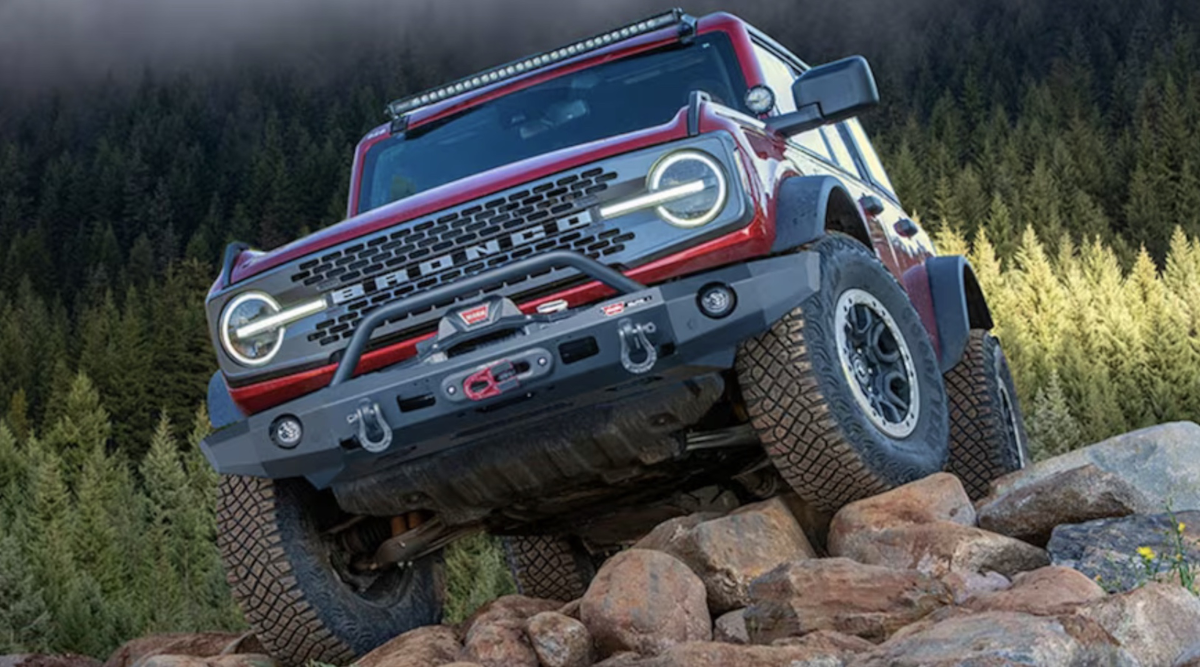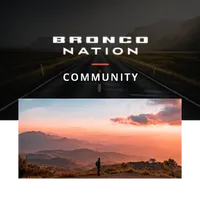image: Ford
I’ve owned and used winches for recovery on vehicles for almost 20 years now. Around 2005, I put one on my Jeep because it was cool and because I thought a winch was essential to get me out of a “stuck” situation. Now I look back on myself and am surprised things turned out as well as they did, considering I knew nothing about a winch. I never took the time to read through the manual (not even sure I had the manual?). I never researched or performed any required maintenance, or properly learned techniques to safely operate it. Instead, I relied on off-roading friends or, I hate to admit, a lot of mansplaining to tell me what’s right and what I shouldn’t do. In most instances, those friends were spot on; however, there was a LOT of information that was either left out, forgotten, or, likely, was not known by the person instructing me in its use. At the end of the day, that’s on me, as I should have taken the time.
So, the first thing I’m going to highly encourage you to do is read the manual for the winch that you own. If you haven’t invested in a winch yet, at least read A manual from a reputable manufacturer. You can find an amazing amount of information on winches from WARN online.

I’m not going to recommend a specific manufacturer or model of winch in this article; rather, I’m going to provide some winch safety practices as well as basic winch maintenance. Again, this is a basic overview. I encourage you to comment below and add to the discussion ways you’ve used your winch and additional tips and tricks you’ve learned regarding your winch.
In my years of off-roading, I’ve seen many winches fail to work on the trail, which defeats the purpose and the investment. Typically, this is due to poor maintenance. From rusty water pouring out of the winch to incorrectly spooled cable, or a misplaced winch controller to damaged cable or rope, not maintaining your winch can spell trouble for you and others participating in your recovery. I lead level 9 trails that require a winch, and most of the vehicles need to use that winch at some point on the trail. The first time we pull rope and that winch doesn’t work, I am always met with a surprised look, followed by intensive and frantic troubleshooting, followed by long delays as the owner tries to fix it. Before you head out on a trail, take two minutes to ensure your equipment works. After any use on the trail, make sure the winch is back in correct working order before you head out again.

What is the basic process to make sure your winch is in good working order? A lot of the process is simply a look and check inspection:
- Look at the winch to make sure there’s no exposed or frayed wiring and that all bolts are tight.
- Look at the cable or rope to make sure there is no damage, including abrasion or kinks. Damaged line must be replaced; even what may appear to be slight damage can significantly impact the strength and could result in breakage during a pull.
- Look at the cable or rope to make sure there is no debris present. If so, clean your line.
- Look at the cable to make sure it is wrapped correctly on the drum.
- Look at the winch and cable after water crossings if the winch was submerged and follow the procedure according to your manual.
- Check to make sure your winch controller is readily available and connects easily and securely to your winch. If you’re in a tough spot and need to use your winch, having the controller in the back of your Bronco in a tote is NOT helpful. It needs to be in reach of the driver.
- Check to make sure the winch activates with the controller. You should set a schedule to check this regularly, every 60-90 days or so.
- Check the connection to the battery; clean and tighten cables as needed.
- Check to make sure the clutch turns easily to allow free spooling.

The last area I want to touch on is safety. I’ve seen some crazy things and utter disregard for safety to get a better photo of someone getting winched. One of the strangest was when I had a vehicle on a winch line, attempting a pull it up a large ledge. A group of impatient mountain bikers walked their bikes between the vehicles, stepping over the taut line. Regardless of our protests, the bikers refused to wait and told us that we were obstructing “their” trail, and they were going to report us to the Bureau of Land Management.
Here are a few safety dos and don’ts when a winch is being engaged:
- Don’t exceed the capacity of your winch. Keep and use a snatch block to reduce the load or don’t use.
- Do wear gloves and be aware of the risk of hand entanglement. Keep hands out of the fairlead when the clutch is engaged.
- Don’t touch the line while under load.
- Do attach to natural anchors that can handle load and hook the cable as low as possible. Attempt to pull straight, not at an angle.
- Do use clear signals and communication.
- Do keep everyone aware of the situation and clear of the area.
- Do have the winching vehicle engine running to prevent battery discharge.
- Don’t use the winch if there are less than five wraps of cable on the drum to prevent the rope coming loose. If you’re using a synthetic rope, increase that number to 10 wraps.
- Do lay something on the winch rope to help absorb the energy. A heavy coat or blanket is a good choice.
- Do make sure the rope is wrapping evenly on the drum and not clumping to one side.
- Do start the stuck vehicle and drive slowly to help the winch. Once traction is regained, take care to not run over the winch line.
I’m sure there are many other helpful tips can be added; however, simply reviewing my list should let you know buying and installing a winch is only the starting point. An informed user combined with that winch makes you an invaluable tool on the trail and can give you more confidence to get out there and explore, which is why you bought your Bronco in the first place.
Ford Performance by WARN
Looking for winch kits and accessories in the Bronco Nation store? Find them under Ford Performance … member discounts apply!


Comments
You must log in or register to post here.